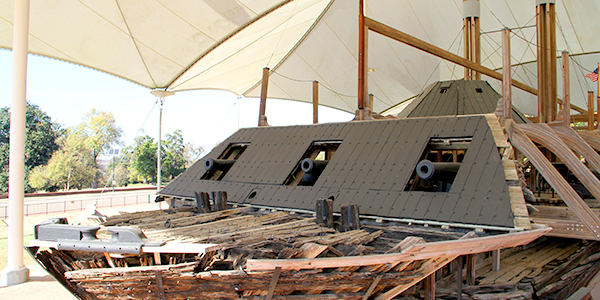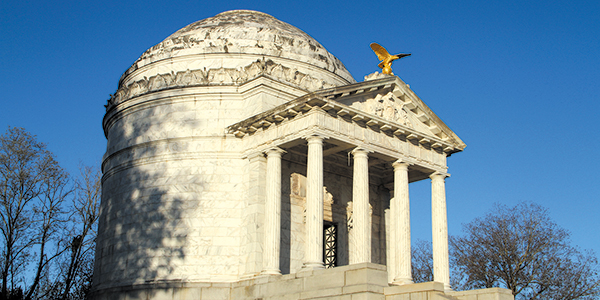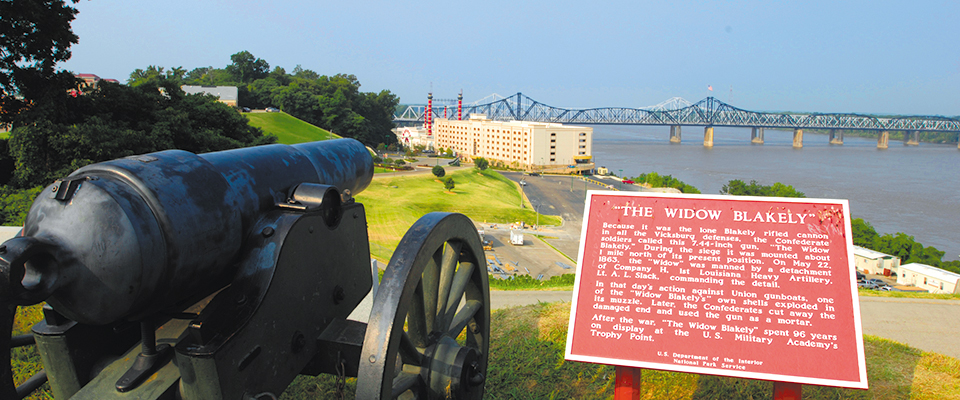Spotlight: Mississippi River Destinations
Follow America’s most storied waterway on this fantastic trip
The Mississippi River is as storied as it is iconic, occupying a central role in the heart, history and culture of the Magnolia State. Since the state’s earliest days of discovery and settlement the river has served as an integral mode of transportation and agricultural irrigation, fueling the growth of communities up and down its twisting, winding shores.
Today, a trip along the course of the Mississippi—even if done by RV—is akin to a trip back in time. When European explorers mapped the mouth of the river in the 16th century, considering it of vital strategic importance, they had no way of knowing they were anchored on the shores of a river so vast that it stretched another 2,320 miles further inland, or that it drained water from more than half the continent.
Each of the small towns and unincorporated communities that now either hug the water’s edge or find themselves within a stone’s throw of it are there because of the Mississippi, and one such stretch of the river is particularly compelling.

Visit Mississippi
Mississippi’s Memphis
Beginning in South Memphis, on the Mississippi side of the city, a trip south via U.S. Route 61 to the sister towns of Vidalia and Natchez makes for a scenic journey full of small-town charm, major American history and family-fun attractions. Along the way, the towns of Tunica, Clarksdale, Cleveland, Greenville and Vicksburg offer lots of opportunities to get out and stretch your legs, do some window-shopping and savor some mouthwatering southern cooking.
In Tunica, make your way straight for the Visitors Center. It’s not only the best place to find information on local sights and events, but it’s also the home of the Gateway to the Blues Museum. The town itself is a popular stop along the Mississippi Blues Trail and the museum’s offbeat collections reflect that.
After exploring the history of the blues, the Tunica RiverPark is the town’s next best gathering point. Home to a range of nature trails and picnic areas, the RiverPark also features sunset riverboat cruises and a scenic river-viewing platform. It’s also the home of the Mississippi River Museum, which gives guests the chance to follow in the footsteps of early explorers and take a peek at life on the bottom of the riverbed by way of four large freshwater aquariums.
After moving through Clarksdale, Cleveland and Greenville from Tunica, you’ll arrive in the scenic town of Vicksburg. Perched high on a bluff overlooking a sharp eastward bend in the Mississippi, Vicksburg is best known in history as being the site of a vicious 47-day siege at the height of the Civil War. Visitors can explore the battle and its aftermath at Vicksburg National Military Park, a site that still bears the original fortifications of the outpost as well as the remains of an ironclad gunboat.
For more lighthearted fare, head to the Biedenharn Coca-Cola Museum (where the very first bottle of Coca-Cola was bottled) or to one of the town’s four world-class casinos. Guided walking tours that highlight Vicksburg’s dazzling collection of authentic antebellum homes are also a popular activity for first-time visitors.

Visit Mississippi
Superlative Sister Cities
At the tail end of your trip south along the winding shores of the mighty Mississippi you’ll find yourself in Natchez, which sits directly across the water from Vidalia. These idyllic sister cities are the epitome of quaint southern charm. Each town is infused with hints and notes from of a variety of cultures—French, British, African, Native American—that stems from hundreds of years of settlement here by explorers and visitors from around the globe.
In Vidalia make a trip to the Riverwalk for a chance to watch an endless stream of historic riverboats steaming to and fro. Sign yourself up for an historic walking tour and learn how in 1938 the entire city lifted up and moved a mile inland as part of an unprecedented river-widening project. If you’re visiting in September you’ll find yourself in the midst of the Jim Bowie Festival, an annual event commemorating Bowie’s infamous riverside melee.
According to local history, Bowie, a renowned pioneer and soldier, was involved in an alcohol-fueled brawl with several locals. Bowie was shot twice and stabbed several times, but he successfully defended himself with the long, curved knife that would later bear his name. Bowie’s legend would be cemented when he died in the Battle of the Alamo in 1836 in San Antonio, Texas. His noteriety would spread as far as England, and in 1960s London, an aspiring rock star named David Jones adopted the name to win wider appeal among the masses. Performer David Bowie went on to be a groundbreaking pop icon with hits like “Fame” and “Let’s Dance.”
Across the water in Natchez, history buffs will gravitate to the Natchez National Historical Park and the Grand Village of the Natchez Indians. The former tells the history of European settlement and expansion in the region, while the latter tells the history of region’s original inhabitants, the Natchez Indians.
Likewise, the Natchez Trails are a hit with most visitors. Not exactly hiking trails in the traditional sense, the Natchez Trails weave through the town’s historic downtown core and along a bluff overlooking the river. Interpretive signs can found along the way, shedding light on the history of the town and its significant structures. Two distinct trails—a nature trail and city trail—lead to new discoveries.
For More Information




